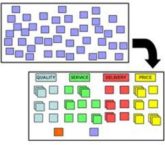Six Sigma and KPI’s: Your Operating Expense Ratio (OER)
Running a business can be expensive. No matter what industry you’re in, what services you offer, or products you make, there’s an ever-changing cost for doing business. Typically, how expensive it is to operate your business determines how profitable you are. Likewise, your operating expenses determine your return on investments, growth aspirations, and revenue. While […]












